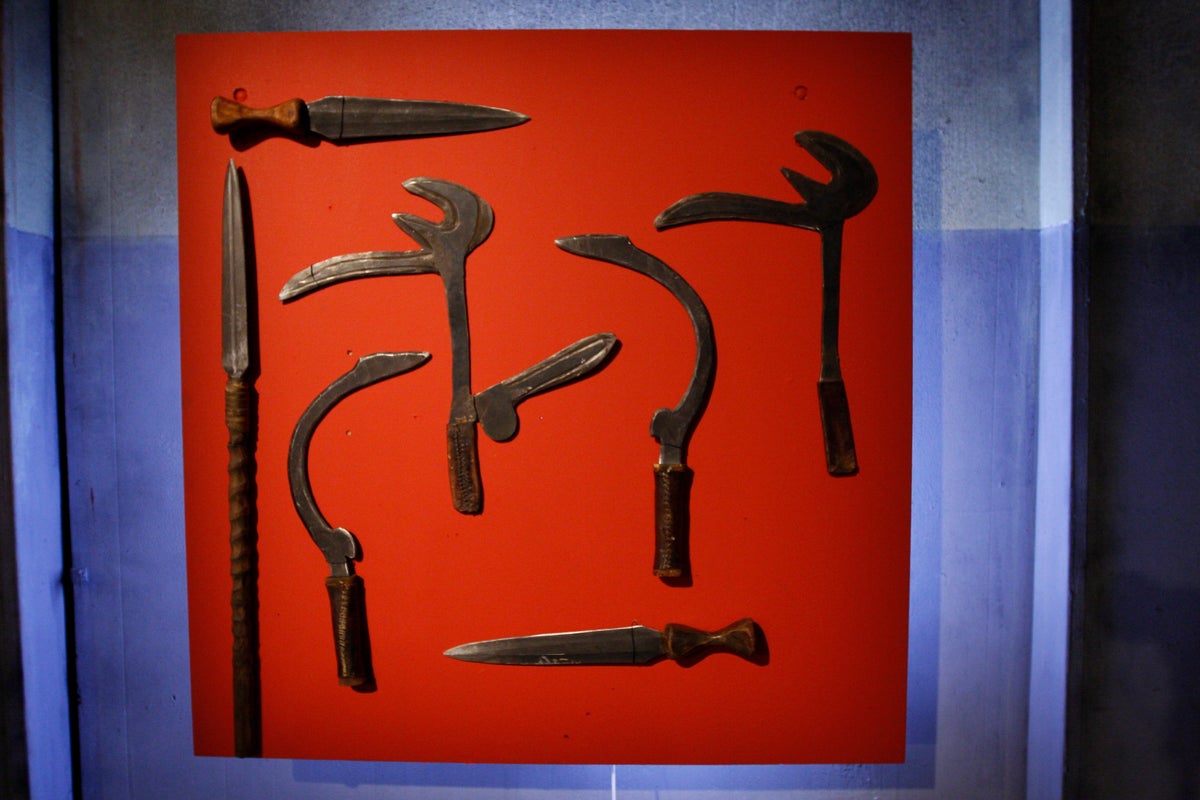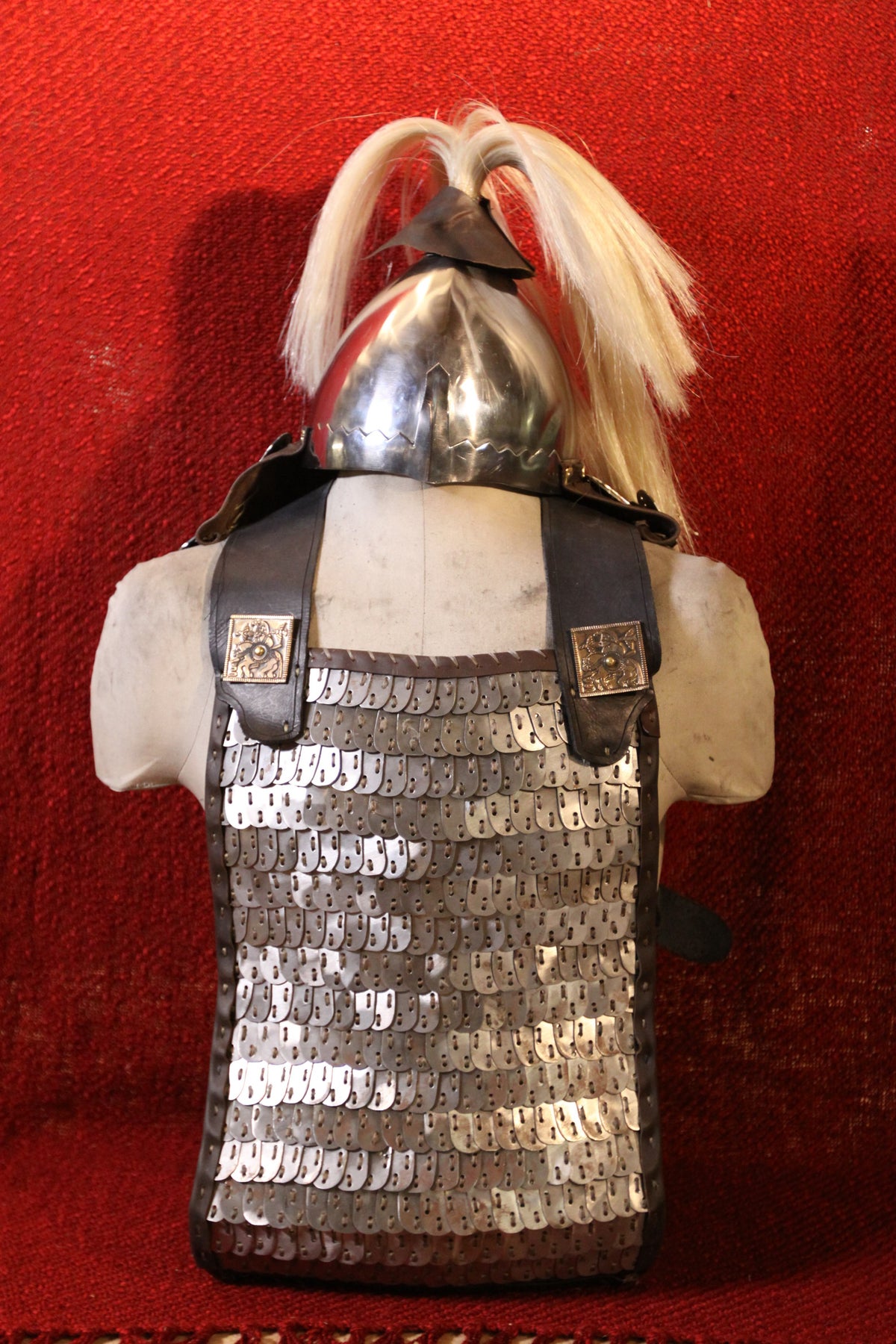'Deadliest Warrior' weapons workshop (photos)
David Baker has carved out a niche as a Hollywood weapons fabricator. He re-creates historic weapons so Spike TV's "Deadliest Warrior" can pit soldiers of different eras against each other. CNET takes a stab at capturing his collection.

Zande warrior's Kpinga sword and knife
Baker: "Of the Zande [of North Africa] weapons, I think my favorite is the Kpinga. It’s a multibladed throwing weapon that ensures a blade will hit, regardless of how it is thrown. Its primitive construction and anthropomorphic design make it a real intimidator on the battlefield."
Zande Kpinga blades
Comanche weapons collection
From left to right: Comanche war club, quiver of arrows, flat bow, rawhide shield, and war hawk.
David Baker: "The Comanche weapons are all basic and effective. The war club delivers a devastating blow. The war hawk, with its sharp steel head, is easily used on the ground or from horseback."
Rajput warrior weapons
David Baker: "The Rajput [of India] showed an amazing talent for designing fearsome and deadly weapons, and those that we used and tested are some of the best in the arsenal. The Katar and scissor Katar are punch daggers on steroids. The Khanda sword has a straight, double-edged blade and is one of the most powerful swords we have ever tested. The Chakram is a simple steel circle with a sharp edge--once thrown, all your opponent can do is try their best to get out of the way."
Spartan shield, Greek Kopis, Chinese broadsword
David Baker: "The Spartan shield is a laminate of hardwood and leather with a thin bronze skin hammered over the face. It’s carried with a hand grip and a forearm strap. The only surviving example of the Spartan shield is in the Vatican Museum--our measurements and construction guidelines came from there."
"The Kopis is the Greek horseman's sword, made with a forward angle in the blade creating a heavy cutting head. The handle wraps around the hand for a better grip. Examples of both iron and bronze blades exist."
"The Chinese broadsword is a heavy Iron Age sword with a wide fullered, or ridged, blade and usually a cast bronze handle. It’s not much for finesse, but a good chopper."
Ming warrior's Nest of Bees
Mixed weaponry
Mixed weaponry from Spike TV's "Deadliest Warrior includes from left to right: Zulu war club, Zulu throwing stick, Celtic longsword, Celtic shield, Burta war club, and Mongol nace.
David Baker: "The Zulu war club is a simple weapon of found material, consisting of a flexible stick with a hardwood head attached, or sometimes a stick of wood with the root ball still attached. These would be fire hardened and shaped."
Roman Centurions armor and Gladius sword
Vlad the Impaler's weapons
David Baker: "The steel crossbow is so powerful it needed mechanical assistance to draw, and in trained hands, it is deadly accurate with a long range. The hand cannon was an early and very effective use of gun powder in the West. It was easy to use and delivered a great amount of force. It wasn’t the most accurate weapon, but when used in volley fire, it was very effective."
Ming armor with Mongol swords
Ivan the Terrible's saber
Crazy Horse Lakota war club
Lawrence of Arabia's Jambia knife
Hannibal Falcata sword
"It owes its design to the Greek Kopis, a weapon the Carthaginians knew well, but with the added benefit of superior metals, making it larger and stronger. It's a great weapon from foot or from horseback. I forged the blade from a 1 3/4-inch-by-1/4-inch bar of high carbon steel, drawing the head of the blade into a convex profile so it would cut more like a knife than an axe."
Mongol bow and arrows
Sun Tzu repeating crossbow
Hannibal's Carthaginian shield
Hernan Cortes' steel Spanish breastplate


